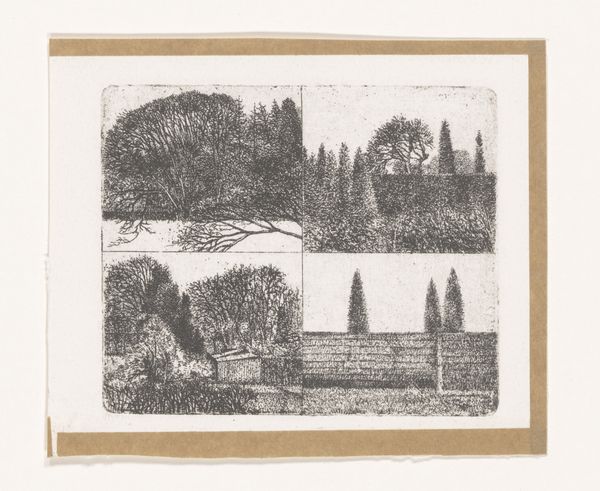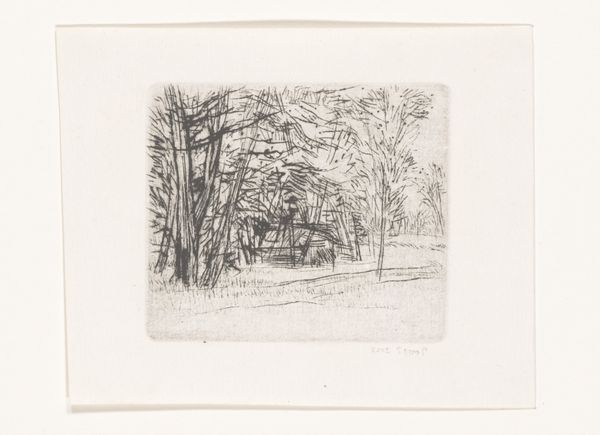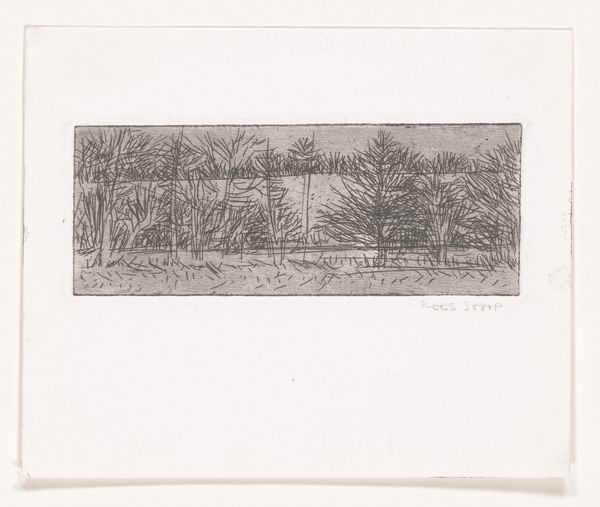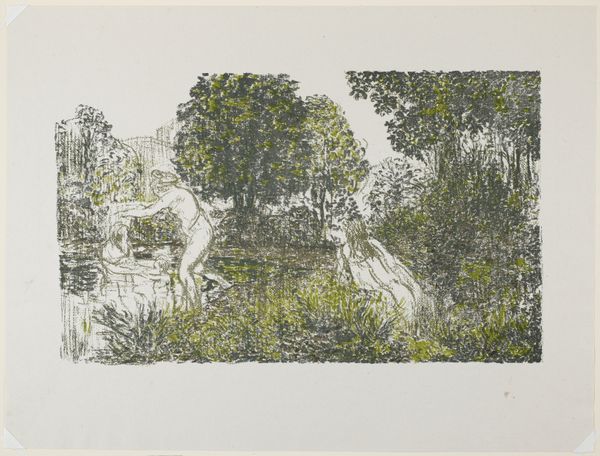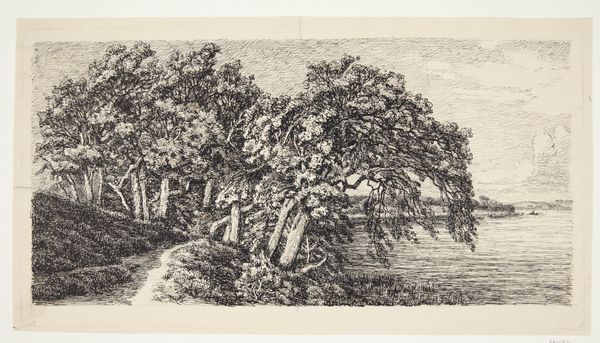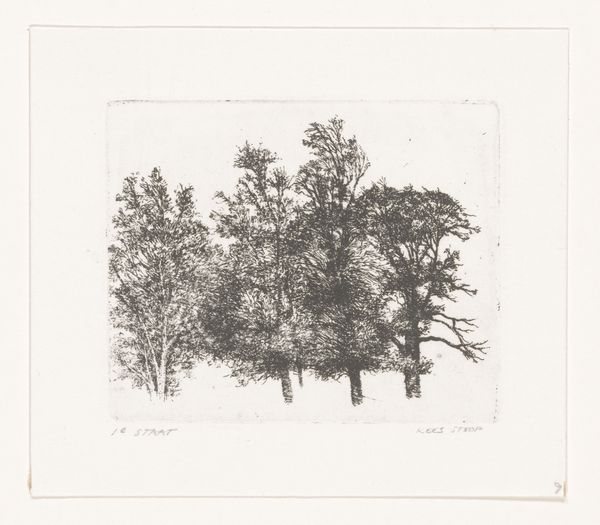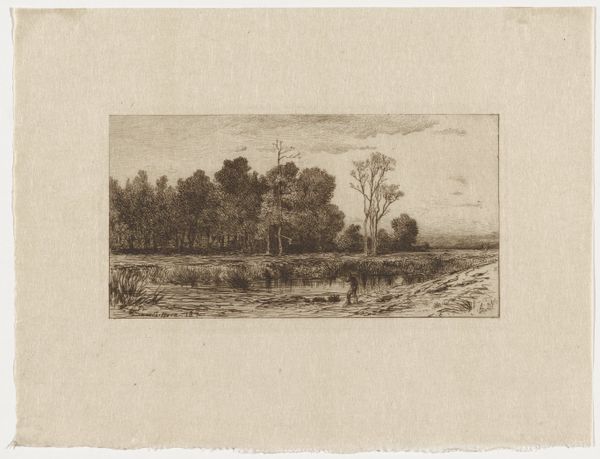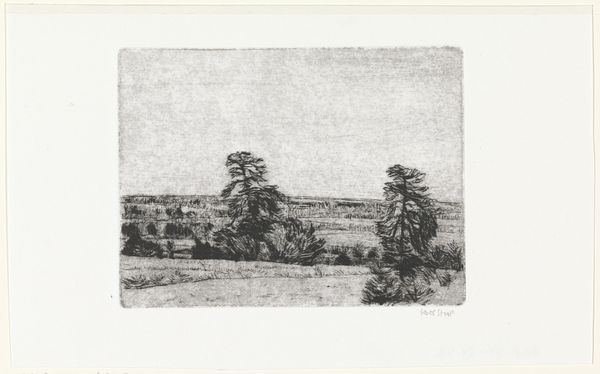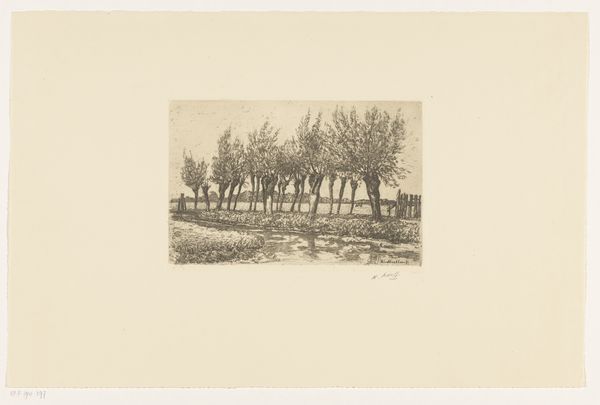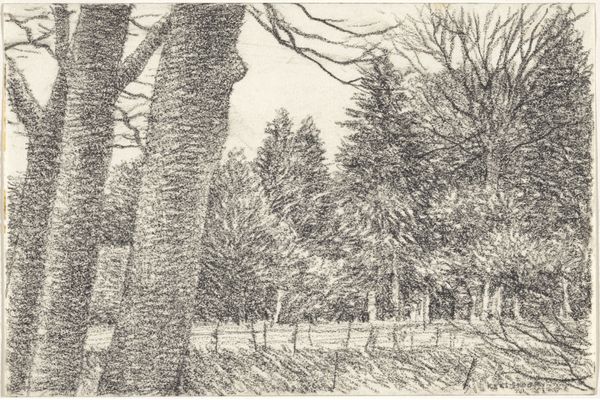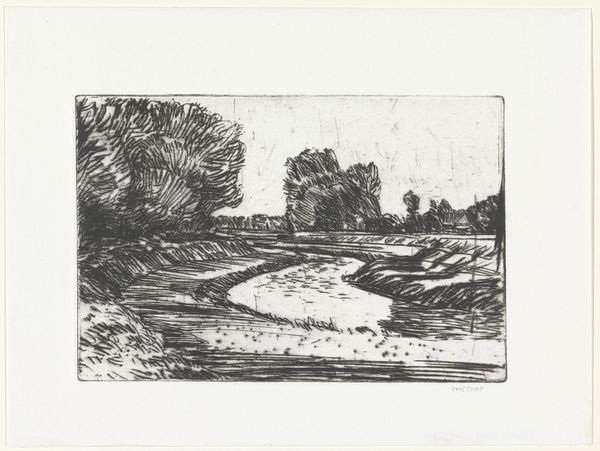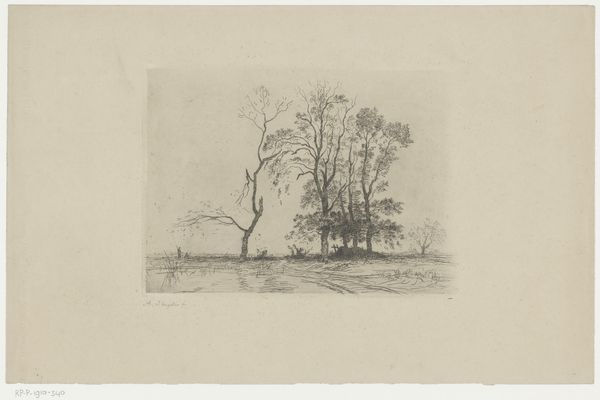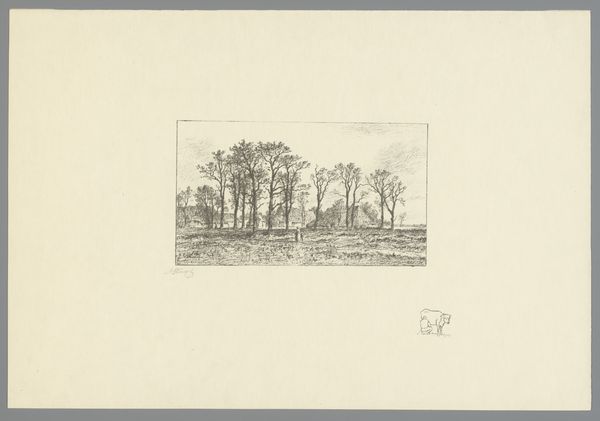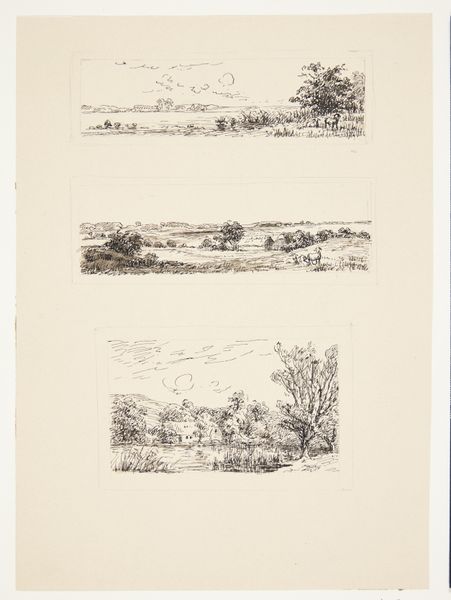
etching
#
etching
#
landscape
#
etching
#
realism
Dimensions: height 90 mm, width 110 mm, height 80 mm, width 97 mm
Copyright: Rijks Museum: Open Domain
Editor: Here we have Kees Stoop’s “Tuin (vier keer)”, which translates to "Garden (four times)", an etching dating sometime between 1944 and 1990. It's a lovely, intricate work, quite small, made of detailed lines. What’s your take on it? Curator: Stoop's choice of etching is significant. Consider the labor involved – the physical act of incising lines into the metal plate, the control over pressure and acid exposure, and then the printing process. This directly reflects Stoop's engagement with materials. I wonder, do you see a commentary on the commodification of nature here? Editor: That's interesting, I hadn't considered that! The different perspectives of the garden almost feel like individual products, perhaps? What does the grid-like composition tell us? Curator: Precisely. And the grid? Think about industrialization, mass production, and the systematization of land. Gardens, traditionally places of leisure and individual cultivation, are now presented as controlled, repeatable units. Stoop emphasizes this controlled nature of gardens. He isn't showing the garden in bloom but in some ways barren of life, but it gives hints of cultivated spaces that may have required cheap labour or external help. Editor: So, you're saying the work highlights the social context behind the making of even a seemingly simple garden view? It shifts focus from aesthetics to the process and labor behind its representation? Curator: Absolutely. Even the style. Realism isn’t just about portraying nature accurately. It's a style employed within certain power structures, linked to land ownership, and displays of cultivated wealth. It reinforces existing social order through its representation. What did you think when you saw this piece? Editor: I liked the detailed texture. Seeing your points has really opened my eyes to the many considerations around production! I now see many elements I wasn't aware of before, such as material, method and political considerations.
Comments
No comments
Be the first to comment and join the conversation on the ultimate creative platform.
